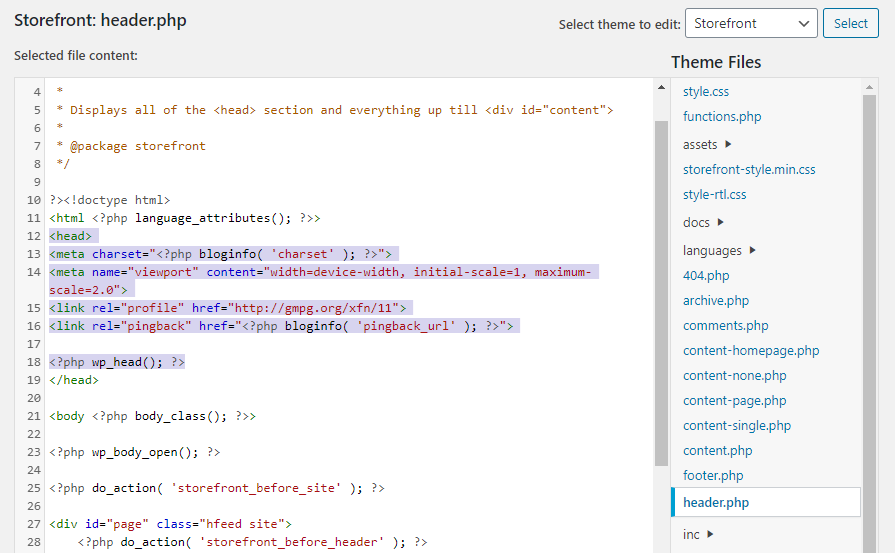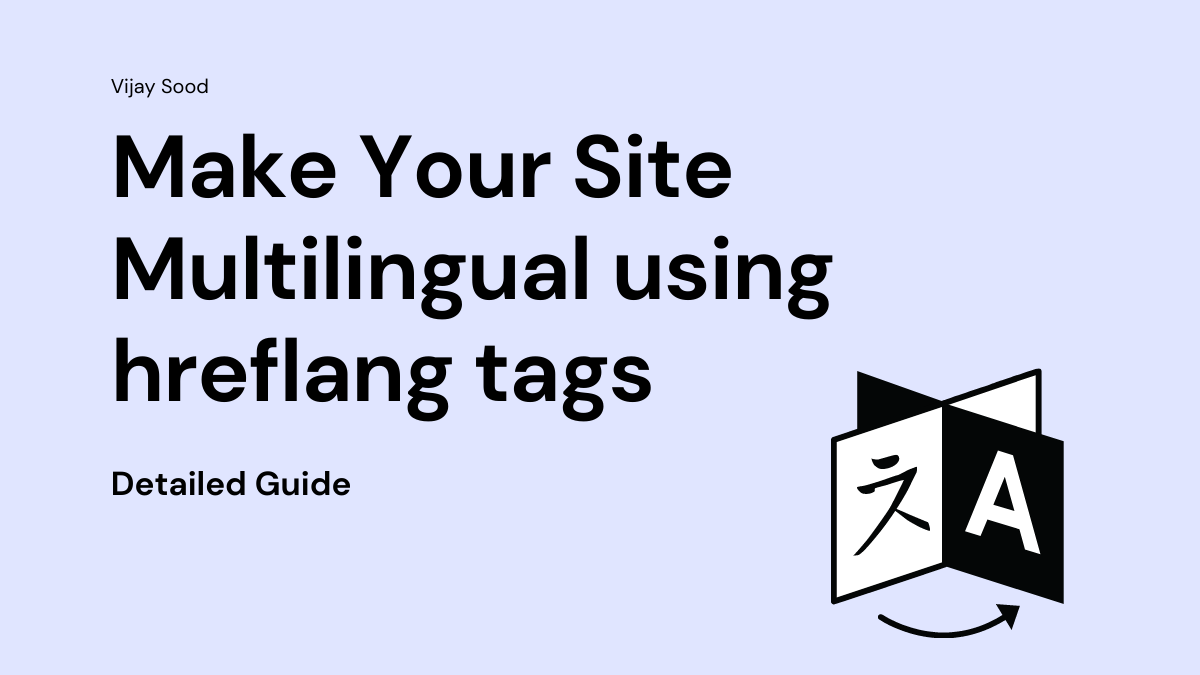Many WordPress site owners cater to consumers from various countries and languages. Some do so by developing multilingual websites, while others do so by providing material in multiple languages.
Search engines can quickly recognise a page’s language and instantly match it to the user’s browser language settings. Your pages may, however, compete with one another in the search results, affecting your site’s SEO.
You can fix this by using hreflang tags. Let’s look at how to add hreflang tags to WordPress quickly.
What Are hreflang Tags?
The hreflang tag tells search engines which website to display for a specific location and language. You can also use it to define different language versions of the same content.
In plain HTML, this is how the hreflang tag is implemented.
1 <link rel=”alternate” href=”example.com” hreflang=”en-us” />
2 <link rel=”alternate” href=”example.com/fr/” hreflang=”fr-fr” />
3 <link rel=”alternate” href=”example.com/pt/” hreflang=”pt-pt” />
The language code and the region code are combined in the hreflang tag. For example, en-us stands for English and the United States, while fr-fr stands for French and France.
Should you use hreflang?
You can use hreflang when:
- You have the same content in numerous languages;
- You have content that is intended at different geographic regions but is written in the same language.
It makes no difference whether your material is hosted on a single domain or numerous domains. You can link variations within the same domain as well as across domains.
Why are hreflang tags important for multilingual websites?
Hreflang tags are important for websites that cater to an international audience because they advise on the target language and regional settings.
Improves global search engine ranking of your website
First and foremost, you want consumers to land on the version of a website that has been optimized for their language and region. Because having the correct language and location-specific information enhances their user experience, fewer users return to the search results. Higher rankings result from fewer people returning to the search results.
Furthermore, when you utilize hreflang tags, you’re telling search engines that particular web pages aren’t duplicate content, despite the fact that their content is nearly identical. As a result, search engines learn that instead of ranking just one of these extremely related pages, they should rank all of them.
Improve the user experience
hreflang tags allow you to create web pages that provide a truly local user experience.
You may be able to generate a sense of connection between website visitors and your brand once you’ve done so. You might even inspire visitors to spend money with you by cultivating goodwill.
Reduce your website’s bounce rate
The percentage of visitors that leave a website after reading only one page is known as the “bounce rate.” You should strive to keep your bounce rate as low as feasible.
Hreflang tags assist in directing website users to content that is appropriate to them. If this results in a positive user experience on the first page of your website, visitors may decide to stay and browse other pages.
How hreflang Tags Work?
When searching through search engines, Hreflang tags notify search engines what to display based on a visitor’s preferences. These are really beneficial when it comes to improving your WordPress local SEO.
Hreflang tags allow you to make your WordPress site multilingual and reach a wider audience.
How to Add hreflang Tags manually without a Plugin
Add hreflang Tags to Your HTML Headers
Every WordPress theme has a header.php file, which you can edit. If you want to add hreflang tags in WordPress without a plugin, the quickest way is to go to your dashboard and navigate to Appearance→ Theme Editor. Here, look for the header.php file in the sidebar to the right:
Editing your theme’s header file.

Notice that we’ve highlighted the contents of the head tags in the screenshot above. This is where you’ll want to add your hreflang tag(s).
For example, if you translate your website from English into Italian and French, you would add the following after <head> and before </head>:

We’re employing two new items in this code sample that you haven’t seen before. The first line establishes the ‘canonical’ version of your material, which is each page in its native language.
The x-default tag is on the second line, and it tells search engines which version of your website to show if they can’t locate one that matches the user’s preferred language.
Although this method is quick, it also has drawbacks. Any hreflang tags you put to your header.php file will vanish when you update your theme unless you’re using a child theme. As a result, we don’t usually advise using this method for WordPress sites.
Include hreflang Tags In Your XML Sitemap
An XML sitemap is a document that you may submit to search engines that lists all of your website’s pages and files. It’s a map that ensures that all critical elements of your website get crawled and indexed.
Sitemaps are very helpful for multilingual websites since they allow you to list all of the different versions of each page. Here’s an example of what hreflang tags in a sitemap look like:

When you transition from HTML to XML files, the structure of hreflang tags changes. The core idea, though, stays the same: hreflang tags are bidirectional, so you’ll need to add as many variations as there are languages on your site.
In any event, editing your sitemap is safer than modifying your theme files. The more languages your website supports, however, the more difficult this implementation gets.
How to Add hreflang Tags using a Plugin
If you are not a pro in coding and don’t want to get your hands dirty with HTML, then there is a simple option of utilizing wordpress plugins.
In our official company’s blog, we have listed 5 Best wordpress multilingual plugins for translation. You can read that article and select the one as per your requirements and budget.
Validating your hreflang tags on regular basis
Hreflang tags are frequently used wrongly on multilingual webpages, even when they are provided. Validating your hreflang tags can assist you figure out if you’ve done everything right.
You’ll need to set up maintenance procedures once you’ve developed a working hreflang setup. It’s also a good idea to check your installation on a regular basis to make sure everything is still working properly.
Make sure that anybody who works with content on your website is aware of hreflang so that they don’t accidentally break your implementation. Two things are necessary:
- Check whether the equivalents of a removed page have been updated.
- Change the hreflang URLs on its counterparts when a page is redirected.
You should have no problems if you implement that and audit on a regular basis.
You can use a variety of internet tools to validate the tags. These tools provide identical information, but in various formats.
Sitrix’s hreflang tag testing tool
It displays the tags on your website, and lets you know if there are any errors.
Merke’s hreflang tags testing tool
It provides a breakdown of the tags and errors on your website.
SALT.agency’s hreflang tag testing tool
If you only want to see errors, you can use this option.
SEO guidelines for hreflang Tags
It’s critical that your website has the correct tag for the language it’s using. It will significantly enhance your SEO and help you climb the rankings.
This will help you reach a larger audience with your website’s information, services, and products. If you’re using one of the many WordPress hreflang tags plugins (also known as multilingual plugins), adding these tags is a breeze.
It’s also critical that you or a member of your team is fluent in any of the languages you’re planning to publish in. Translation software isn’t perfect, so be sure you’re delivering your customers accurate information.
Remember that the goal of a website is to improve the visitor’s experience, and providing your website in the visitor’s local language will undoubtedly help you do so.
If you need any help in implementing Hreflang tags on your website, feel free to reach our team.
